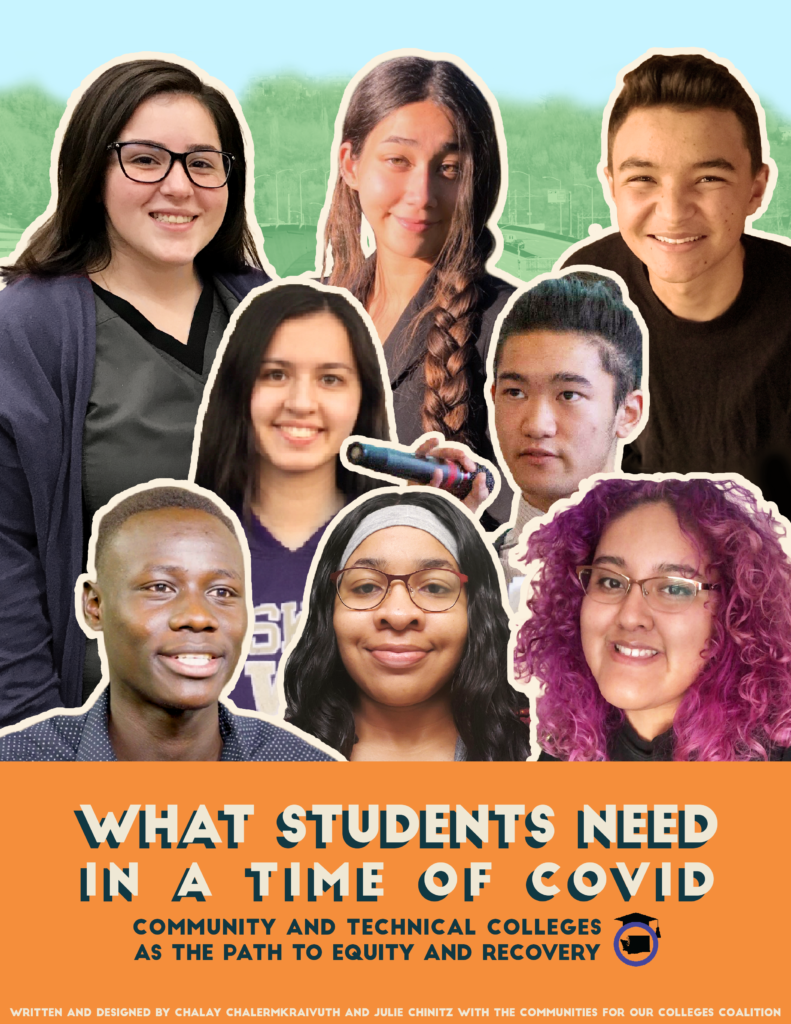Washington’s Community Colleges as the Path to Equity & Recovery

This report gathers the voices of students at Washington State’s community and technical colleges (CTCs) in order to shine a light on the important role CTCs have to play in advancing racial and economic justice. The report also explains how the challenges students face at CTCs arise from underfunding and lays out policy recommendations to address these challenges.
Washington’s 34 community and technical colleges (CTCs) are pillars of local communities around the state. They are key to racial and social equity, educating students of color at higher rates than other institutions. Each year, more than 360,000 students attend one of these colleges, pursuing education that will allow them to go on to four-year universities or start their careers. Parents count on CTCs to educate their children and prepare young people for leadership in their communities.
There are a lot of people here in Wenatchee who go to the community college because it is affordable. There are a lot of immigrant, first-generation students who generally don’t have that financial background to support themselves, and even then, attending Wenatchee Valley College has been a financial strain on them or their families.
Lizbeth Rivera
Student at Wenatchee Valley College
CTCs now face potential budget cuts due to the economic turmoil of the coronavirus pandemic. In fact, the pandemic makes the need for affordable higher education all the more urgent. Washington State saw a record number of unemployment claims in May 2020, and the unemployment rate of workers without post-secondary certification was double that of workers with certification. People turn to CTCs for professional development and to obtain the training they need for higher-wage jobs. Washington State needs accessible post-secondary education to secure an equitable post-pandemic recovery.
The pandemic has also seen the precipitous growth of an already substantial racial wealth gap:
- In 2018, Washington State had the tenth widest income gap in the nation.
- In King County, more than half of Black residents experience asset poverty, followed by 45.5 percent of Latinx residents and 44.2 percent of Native residents, compared to 19 percent of white residents.
A full and just recovery from the pandemic must address this racial and economic inequality. As the racial wealth gap grows, higher education has increasingly become a prerequisite for quality employment. This pairing of trends heightens the urgency of making higher education available and accessible to all Washington residents. With 45 percent of their students being people of color, CTCs are ahead of other higher education institutions in the state in terms of addressing racial disparities in education.